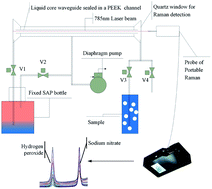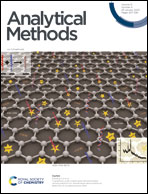A robust model developed by LCWR combined with uniform design for the determination of hydrogen peroxide in water used in a microgravity environment†
Abstract
Hydrogen peroxide degrades into water and oxygen, and it is generally recognized as a safe and nonaggressive disinfectant without residues or toxic chemicals, a feature especially important for its implementation in manned spacecraft. It has been extensively and safely used as a food preservative, and the use of hydrogen peroxide as a biocide in water in long-duration space missions to complement the use of iodine and silver, and in the sanitation of vegetable crops harvested in controlled ecological life support systems prior to consumption, are both proposed. Traditional detection methods for hydrogen peroxide concentrations include the iodine method or titanium salt colorimetric method, which use a variety of reagents and need cumbersome operating steps and are thus not suitable for quantitative detection applications under the microgravity environment in manned spacecraft. In order to further realize the detection of hydrogen peroxide under a microgravity environment, vacuum-introduced liquid-core waveguide Raman (LCWR) apparatus is designed and combined with a uniform design scheme. The results showed that the developed quantitative approach for hydrogen peroxide has advantages, including a standard error of calibration of 0.22, a coefficient of determination (R2) of 0.9986, and a standard error of prediction of 0.42. This study demonstrates the great potential of the apparatus for the quantitative analysis of hydrogen peroxide in water under a microgravity environment.



 Please wait while we load your content...
Please wait while we load your content...